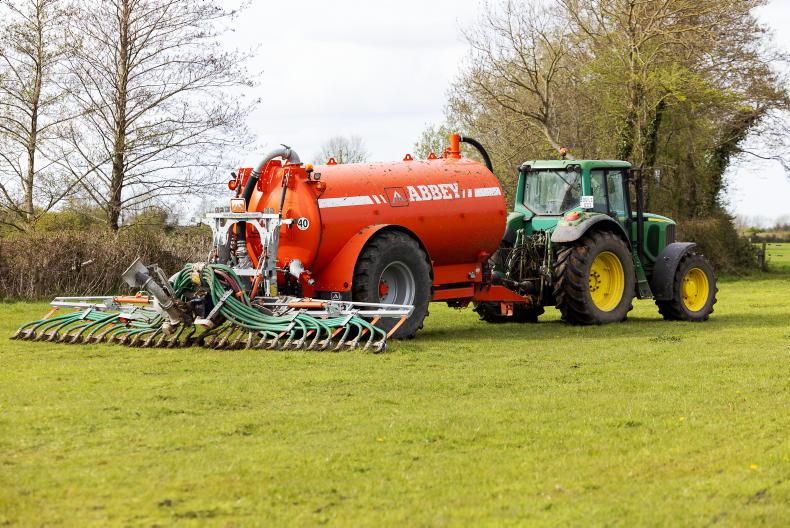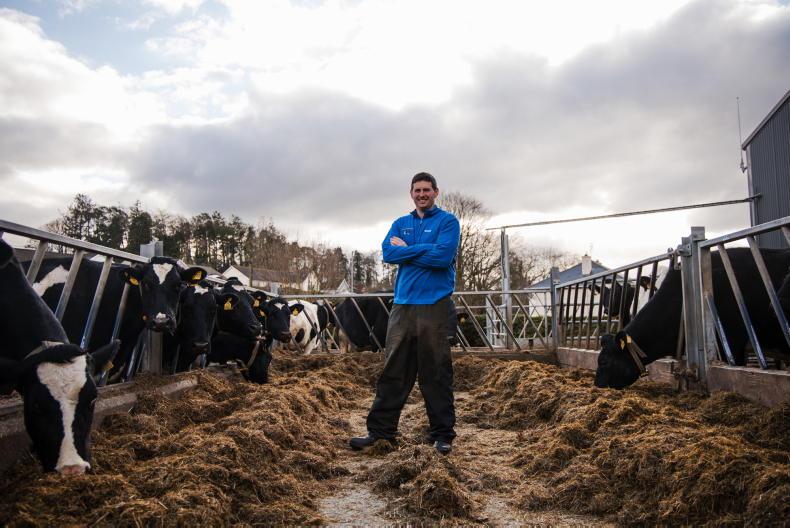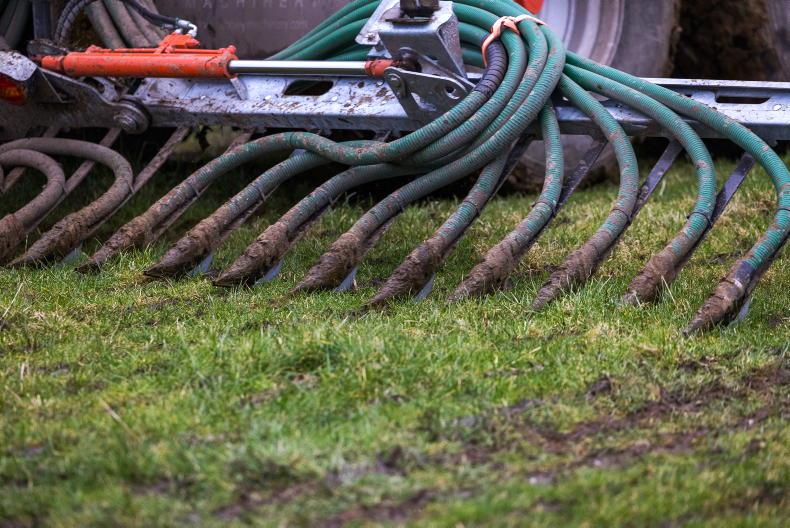There was good news for farmers in derogation this week, with the adjustments made around nitrates reducing the pressure on cow numbers.
The combination of lower excretion rates for calves and yearlings, and recognition of where lower-protein rations are used, will help dairy farmers in particular to adjust to the 220kg regime now in place across much of the country.
This followed on from encouraging noises from Brussels on Monday, where the ministerial council met with the European Commission. The pledge was to make the next CAP simpler and more farmer-facing.
As Minister for Agriculture Charlie McConalogue put it: ”There are new pressures now and the CAP is also expected to deliver for the environment.
"Farmers are committed to improving the sustainability of their operations, but it is critically important that in pursuing this objective, we do not make life impossibly complex for them.”
Sour candy surprise
Imagine my surprise on Thursday evening then to discover that within the sweets for derogation farmers lay a little sour candy.
Every slurry transfer event must be logged with the Department within four days of it happening. The details of how that will happen lie ahead, but the Minister gave assurances that farmers will soon be able to catch up with reporting of slurry spread so far this year.
There is a deep irony in the Minister seeming to break the pledge he made on Monday within four days by imposing another layer of complexity on farmers.
But perhaps this one is justified. After all, inappropriate slurry spreading is a practice we must eliminate.
And this arms the Department with knowledge of where and when slurry is being spread, allowing visual checks to take place, online or on the ground.
Time-sensitive duty
However, this ratcheting-up will mean there is another time-sensitive duty for farmers to perform - at the same time as calf registration and all the actual work that spring brings.
The people it will add an even bigger burden to will be farm advisers.
Whether Teagasc or private, planners are currently facing into two and a half months of intense work, preparing 120,000 BISS applications. That also involves Eco Scheme selection, ACRES actions for the year ahead and maps for not just BISS but ANC payments too.
The Department will work on processing these application from when they start trickling in next week until October and may not realise the intensity of the planners' work and the pressure of the need to get everything right every single time.
Add in the need for nutrient management plans on farms - many for the first time - and there's some workload there.
And now farmers will be contacting their adviser to say they've exported slurry. I can imagine many of the conversations.
"I spread a few loads down in Johnny Murphy's."
"Who exactly is Johnny Murphy?"
"You know, red-haired Johnny that used to hurl."
"I've no idea who that is. Have you an address and herd number?"
"No, is he not one of your clients?"
"No. Please get those details, also exactly how much slurry was spread and the LIPS number of the fields it was spread in and then I'll email or WhatsApp them to me and I'll forward them to the Department. What day did you spread this slurry?"
"Last Thursday."
"That's six days ago now, you're already in breach of the regulations."
It's another headache on an already overworked cohort of people, caught in the crossfire between the Department and farmers.
Light-touch regulation
The Department has been wagging its fingers at farmers for a decade now over inappropriate slurry management, without doing enough to enforce the regulations that have long been in place.
The practice of "paper exports" of slurry should have been addressed more firmly in the past. Why not do what is being done with other schemes and use satellite surveillance to see if slurry was spread where declared.
Exports to tillage land would be the easiest to track, as the window for slurry application is shortened by ploughing or planting.
After all, the Department seems able to check if a field has been ploughed or not when it's declared as min-till for ACRES. It can check if a field has bales on it when declared for the Straw Incorporation Measure.
The same assiduous attention has not been applied where no scheme is in place
Mapping checks reveal untrimmed hedges encroaching into fields or lime heaps and farmers get letters enquiring if they are willing to accept a reduction in the eligible area of the field involved. Sometimes those reductions are no more than 0.01ha!
But such technology has rarely - if ever - been employed to check if slurry is going where it's meant to.
And I have a little theory why. All the most zealously overseen measures and schemes are ones where payment is involved. Fair enough, it's the taxpayers money.
But the same assiduous attention has not been applied where no scheme is in place.
I reckon that if the Department had put more effort into catching a few blatant offenders - particularly serial offenders - and making a very public example of them, we would have seen farmers get the message.
As it is, we now have the majority of farmers who are abiding fully with the regulations being asked to jump through another hoop to close the net on the laggards.
Calling this one the persecution of the compliant would be an exaggeration, but it hardly fits with the "critical importance" words from the Minister on Monday.
Pet theory
I also have a little theory on why there is inadequate slurry storage on many farms. We need to go back to 2021, when the climate action plan was passed into law. That’s when talk of a potential cow cull started in earnest.
I think (and I wrote at the time) that warnings of such an eventuality caused many farmers to stock themselves to maximum capacity, in the belief that should a slide-rule mandatory cut be imposed, they would have some room to scale back to a number of cows they would be happy with.
And then the cow cull never happened. And then 2022 came along, with fantastic weather and a record milk price. And farmers got fond of these extra cows and all the milk they produced and all the profit that generated.
And then 2023 came, a year where from around now (early March) on, weather was mostly awful. Grass and slurry management was a nightmare and milk prices quickly returned to more typical levels, while inputs reverted to type.
But I think that many farmers have forgotten that some of the cows they have on hand were a “temporary little arrangement”, designed to provide a buffer against a cow cull. They now want to keep those cows and hope for another 2022. Unfortunately, this year is shaping up much more like 2023.
Tanks full to the brim
The underlying reality is that farmers will need much more slurry storage per animal going forward. The extra two weeks of the closed period, the closed period for spreading of dirty water and the need for separate dirty water storage, and the ever-more unpredictable weather are all combining to leave farmers needing more storage.
We can see all over the country tanks full to the brim at the start of March, with very little opportunity for appropriate spreading. I saw an exchange among farmers on social media taking Teagasc to task for advising farmers to hold off on spreading in January, with a better economic response from slurry spread in March.
There were questions as to whether it would have been better to spread then rather than be under pressure now. I was struck by the intervention of Áine O’Connell, the Irish Farmers' Association’s dairy executive.
She said that January was not a good time to spread because ground temperatures meant there was no great uptake of slurry, while saturated soils in late February meant spreading was also inappropriate at that time.
Of course, she was right and her further point that a lot of extra slurry capacity needs to be built to allow farmers weight for better conditions was well made.
The catch-22 situation where farms in derogation are denied the grant aid to support the slurry storage they need must be resolved.








SHARING OPTIONS